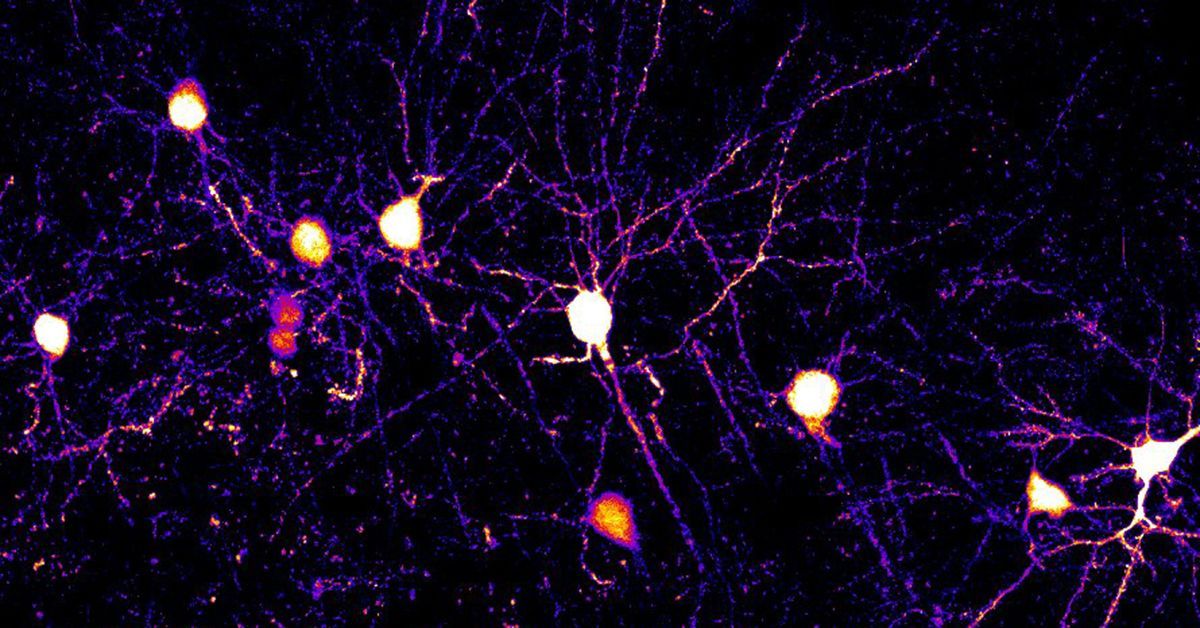Groundbreaking Study Uncovers How Our Brain Learns
Sophisticated synapse imaging used in NIH-funded project tracks changes within neurons as learning unfolds, offering new insights for brain-like AI systems
Published Date
Article Content
How do we learn something new? How do tasks at a new job, lyrics to the latest hit song or directions to a friend’s house become encoded in our brains?
The broad answer is that our brains undergo adaptations to accommodate new information. In order to follow a new behavior or retain newly introduced information, the brain’s circuity undergoes change.
Such modifications are orchestrated across trillions of synapses — the connections between individual nerve cells, called neurons — where brain communication takes place. In an intricately coordinated process, new information causes certain synapses to get stronger with new data while others grow weaker. Neuroscientists who have closely studied these alterations, known as “synaptic plasticity,” have identified numerous molecular processes causing such plasticity. Yet an understanding of the “rules” selecting which synapses undergo this process remained unknown, a mystery that ultimately dictates how learned information is captured in the brain.
University of California San Diego neurobiologists William “Jake” Wright, Nathan Hedrick and Takaki Komiyama have now uncovered key details about this process in a study partially funded by the National Institutes of Health. The main financial support for this multi-year study was provided by several National Institutes of Health research grants and a training grant.
As published April 17 in the journal Science, the researchers used a cutting-edge brain visualization methodology, including two-photon imaging, to zoom into the brain activity of mice and track the activities of synapses and neuron cells during learning activities. With the ability to see individual synapses like never before, the new images revealed that neurons don’t follow one set of rules during episodes of learning, as had been assumed under conventional thinking. Rather, the data revealed that individual neurons follow multiple rules, with synapses in different regions following different rules. These new findings stand to aid advancements in many areas, from brain and behavior disorders to artificial intelligence.
“When people talk about synaptic plasticity, it’s typically regarded as uniform within the brain,” said Wright, a postdoctoral scholar in the School of Biological Sciences and first author of the study. “Our research provides a clearer understanding of how synapses are being modified during learning, with potentially important health implications since many diseases in the brain involve some form of synaptic dysfunction.”
Neuroscientists have carefully studied how synapses only have access to their own “local” information, yet collectively they help shape broad new learned behaviors, a conundrum labeled as the “credit assignment problem.” The issue is analogous to individual ants that work on specific tasks without knowledge of the goals of the entire colony.

As mice learned a new behavior, researchers closely tracked synaptic connections (depicted here as small protrusions) on the dendrites of neurons.
Finding that neurons follow multiple rules at once took the researchers by surprise. The cutting-edge methods used in the studied allowed them to visualize the inputs and outputs of changes in neurons as they were happening.
“This discovery fundamentally changes the way we understand how the brain solves the credit assignment problem, with the concept that individual neurons perform distinct computations in parallel in different subcellular compartments,” said study senior author Takaki Komiyama, a professor in the Departments of Neurobiology (School of Biological Sciences) and Neurosciences (School of Medicine), with appointments in the Halıcıoğlu Data Science Institute and Kavli Institute for Brain and Mind.
The new information offers promising insights for the future of artificial intelligence and the brain-like neural networks upon which they operate. Typically an entire neural network functions on a common set of plasticity rules, but this research infers possible new ways to design advanced AI systems using multiple rules across singular units.
For health and behavior, the findings could offer a new way to treat conditions including addiction, post-traumatic stress disorder and Alzheimer’s disease, as well as neurodevelopmental disorders such autism.
“This work is laying a potential foundation of trying to understand how the brain normally works to allow us to better understand what’s going wrong in these different diseases,” said Wright.
The new findings are now leading the researchers on a course to dig deeper to understand how neurons are able to utilize different rules at once and what benefits using multiple rules gives them.
The research was funded by the National Institutes of Health (grant R01 NS125298, R01 NS091010, R01 DC018545, R01 MH128746, T32 NS007220), National Science Foundation (2024776), a Simons Collaboration on the Global Brain Pilot Award and an Eric and Wendy Schmidt AI in Science Fellowship.
Learn more about research and education at UC San Diego in: Artificial Intelligence
“Our research provides a clearer understanding of how synapses are being modified during learning, with potentially important health implications since many diseases in the brain involve some form of synaptic dysfunction.”
Share This:
Stay in the Know
Keep up with all the latest from UC San Diego. Subscribe to the newsletter today.






